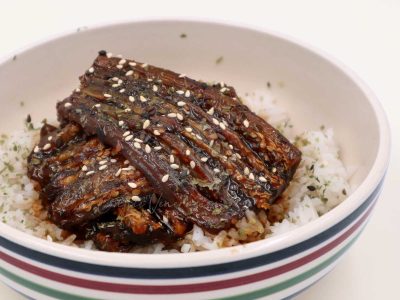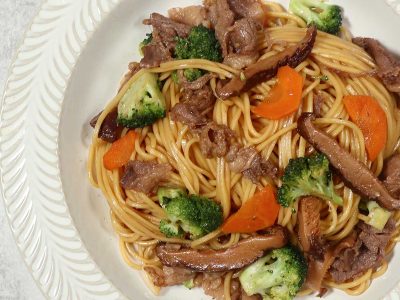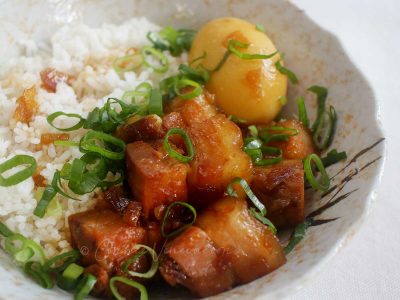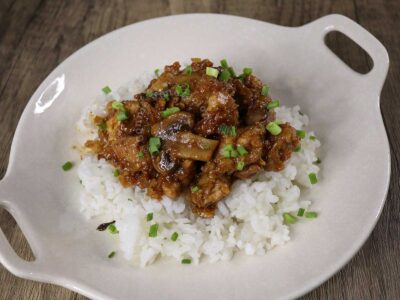Yes, it’s a fusion of Korean and Japanese. And, yes, it’s terrific. Why not make kimchi soup the traditional Korean way? Too spicy for us. And, to be honest, we don’t cook Korean food as much nor as often as Japanese food so we don’t always have Korean ingredients on hand.
Why soup in July? I know that it’s the height of summer in the northern hemisphere. But it’s monsoon season in the country right now and soup is most welcome.
My older daughter, Sam, is taking a break from work as she recovers from a bug. She’s spending a few days at home to recover, she asked for kimchi soup, I made a meatless version for her, and this — which has a pound of pork belly — is for her father, sister and me.
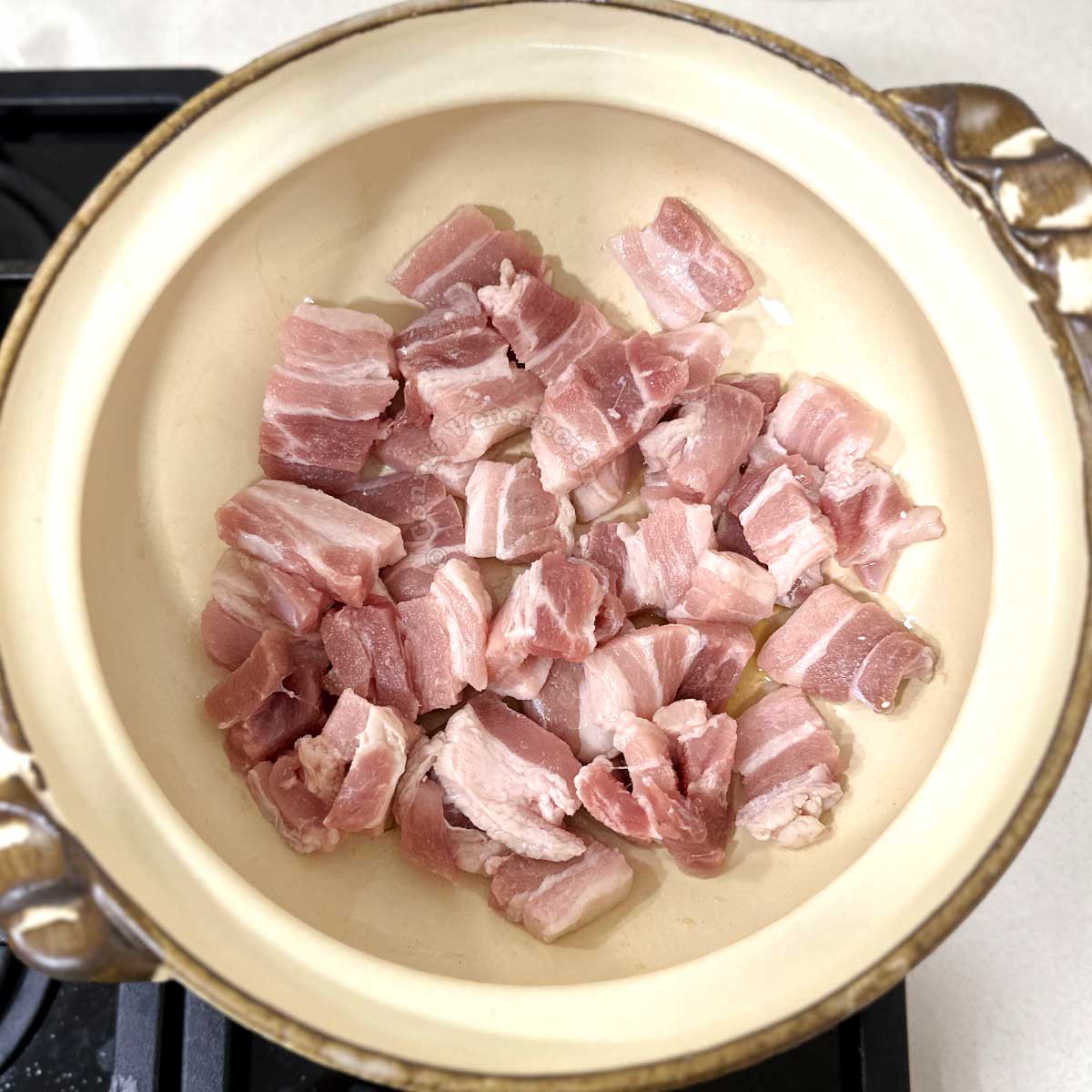
To make this kimchi soup, start by heating sesame seed oil in a pot. I used a Japanese claypot — donabe — but the Koreans have a special black claypot that they use. You don’t need to do this in a claypot though. Any thick bottomed pot will do.
When the oil is hot, spread slices of pork belly in the pot. Cook without disturbing for a minute or so, stir and continue cooking with occasional stirring just until the meat is no longer pink.

Season the pork with equal amounts of soy sauce (I used Kikkoman), sake and mirin. Yep, just like teriyaki sauce. It’s the soy sauce that gives the pork a deep umami flavor while the sake and mirin add sweetness. Why would I want to add sweetness to kimchi soup? To cut down on the acidity of the kimchi.
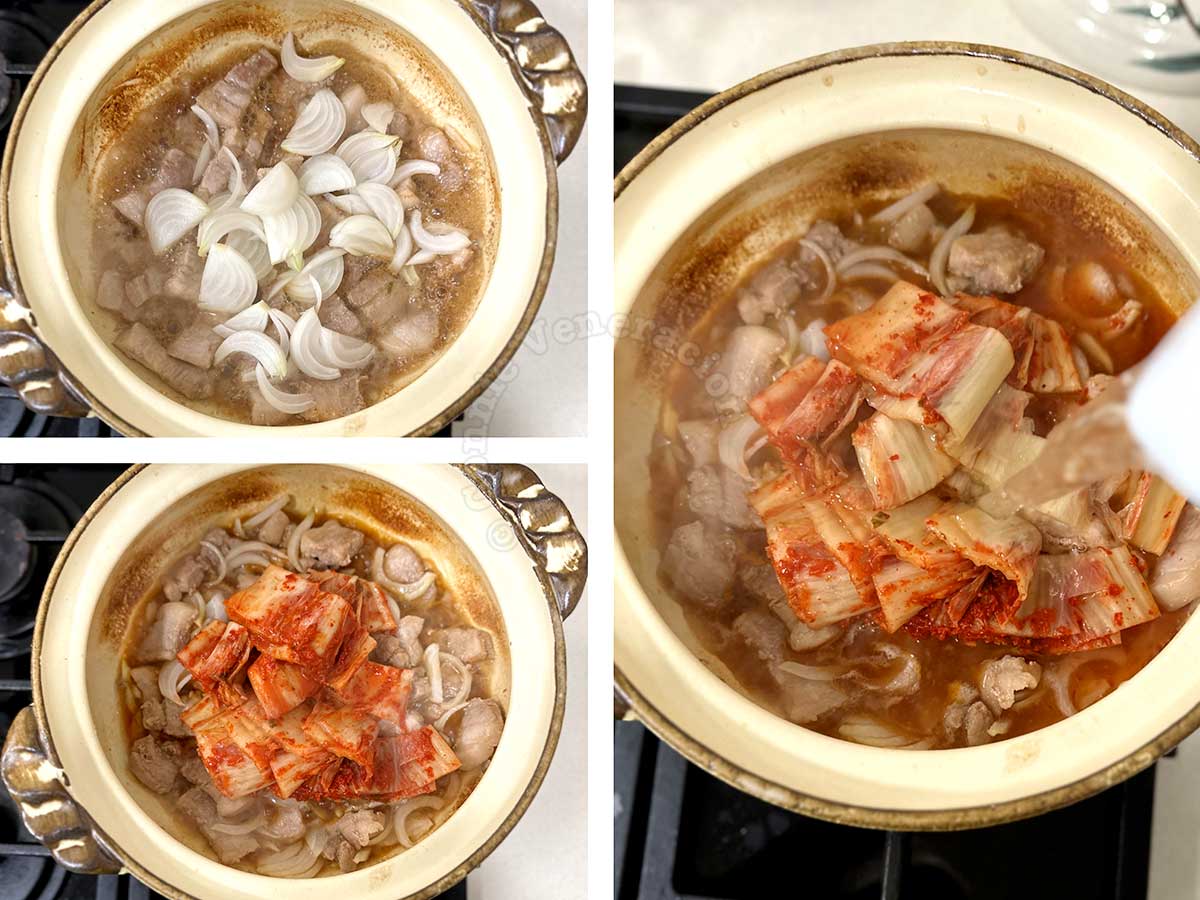
Stir sliced onion into the pork, cook with a bit of stirring until translucent, add the kimchi — as much or as little as you like — then pour in water. The pork will need to simmer for at least half an hour so add plenty of water.
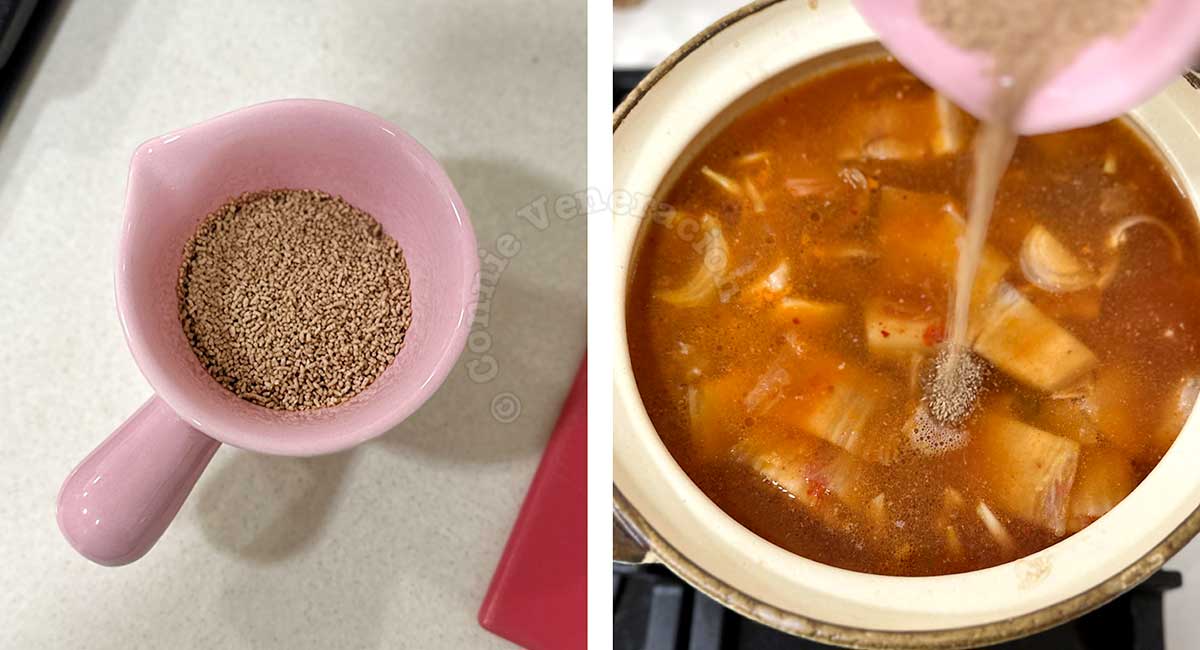
The broth of traditional Korean kimchi soup is made by simmering anchovies with kelp. I substituted Japanese dashi which is made by simmering bonito flakes which, in turn, come from fermented and dried skipjack tuna.
Won’t plain water do? I tried that. I tasted the broth after the pork and kimchi had simmered for about ten minutes. Bland. I added fish sauce but the broth still tasted flat. That was when I decided to add dashi. And it worked like a dream.
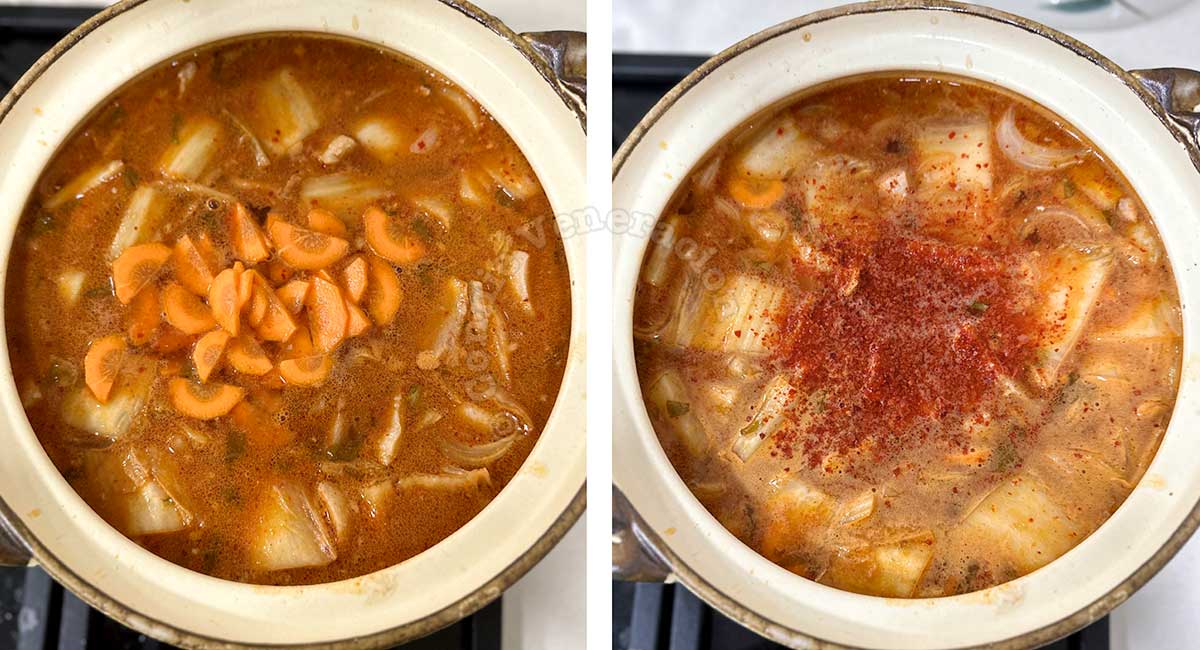
When I was happy with the way the broth tasted, I added sliced carrot. I figured we could do with just bit more heat, so, a few pinches of Korean chili flakes went in. If you haven’t cooked with Korean chili flakes before, know that the heat is mild and there’s sweetness that’s quite pronounced.
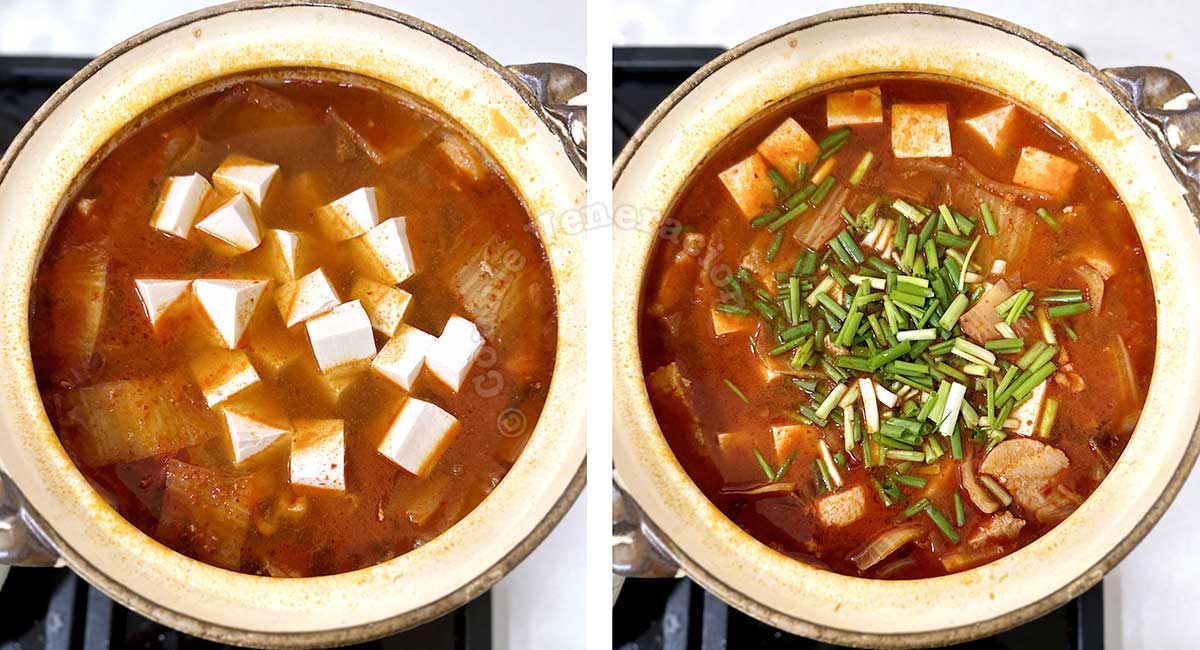
Cubed silken tofu was added during the last ten minutes of cooking. During those ten minutes, the tofu soaked up some of the saltiness in the broth so I made adjustments by stirring in fish sauce. The flavor perfect, the heat was turned off and scallions were stirred in.
Kimchi soup
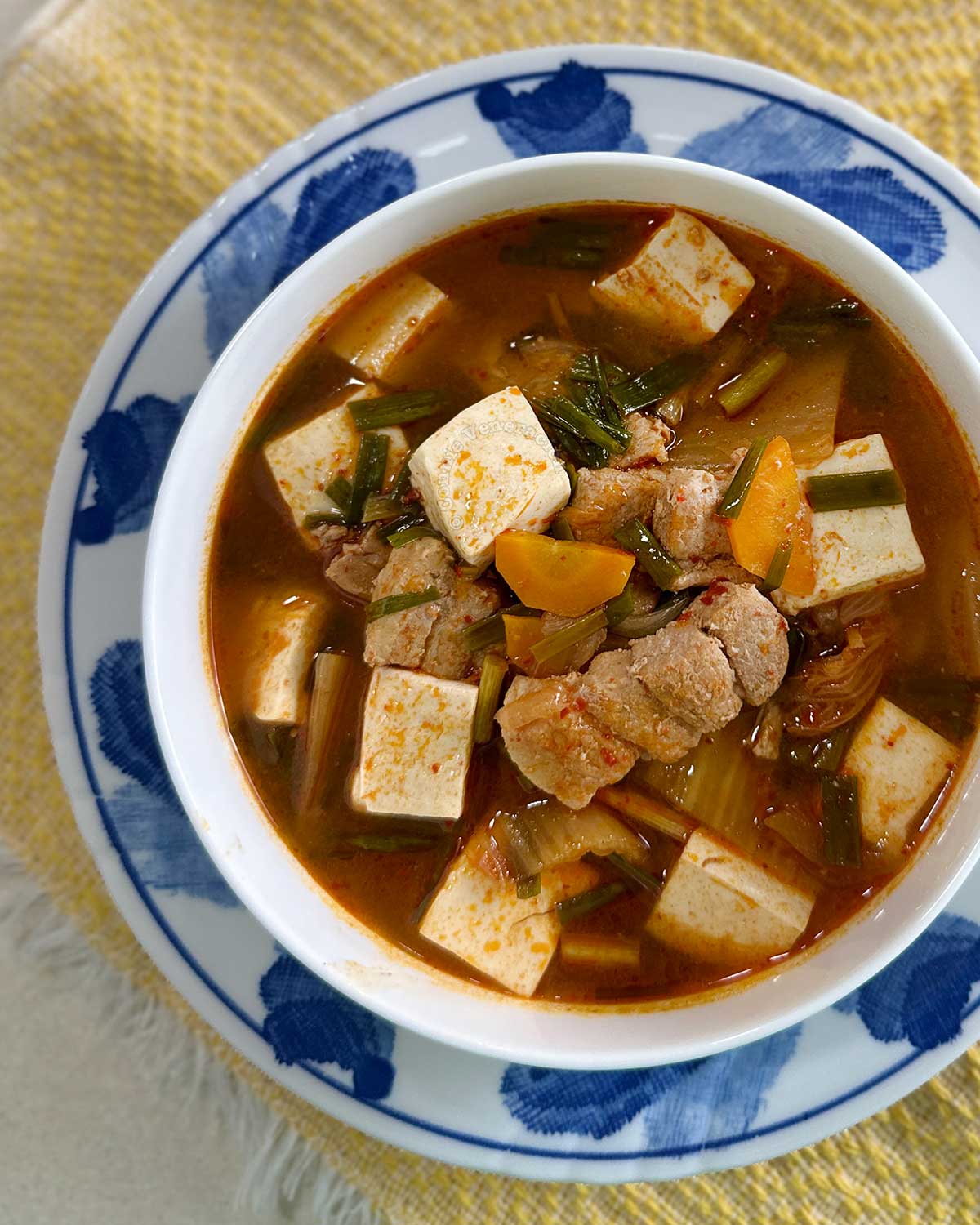
Ingredients
- 2 teaspoons sesame seed oil
- 450 grams thinly sliced pork belly cut into bite-sized pieces
- ¼ cup Japanese soy sauce
- ¼ cup sake
- ¼ cup mirin
- 1 onion peeled and thinly sliced
- 2 cups kimchi cut into bite-sized pieces (do not discard the juice)
- 2 tablespoons fish sauce
- 2 tablespoons dashi granules
- 1 small carrot peeled and thinly sliced
- ½ to 1 teaspoon chili flakes optional
- 1 300-gram cake silken tofu cut int one-inch cubes
- ½ cup sliced scallions
Instructions
- Heat the sesame oil in a pot.
- Spread the pork slices on the hot oil and leave to cook for a minute or so. Stir and cook just until no longer pink.
- Pour in the soy sauce, sake and mirin. Cook until the pork slices have soaked up most of the liquid.
- Add the onion and cook with occasional stirring until translucent.
- Add the kimchi with the juice.
- Pour in about six cups of water.
- Stir in the dashi.
- Taste and add fish sauce, as needed.
- Add the carrot slices and chili flakes.
- Simmer for 30 minutes.
- Stir in the tofu cubes and simmer for another ten minutes.
- Taste the broth, add more fish sauce, if needed, then turn off the heat.
- Add the scallions to the kimchi soup and stir.



